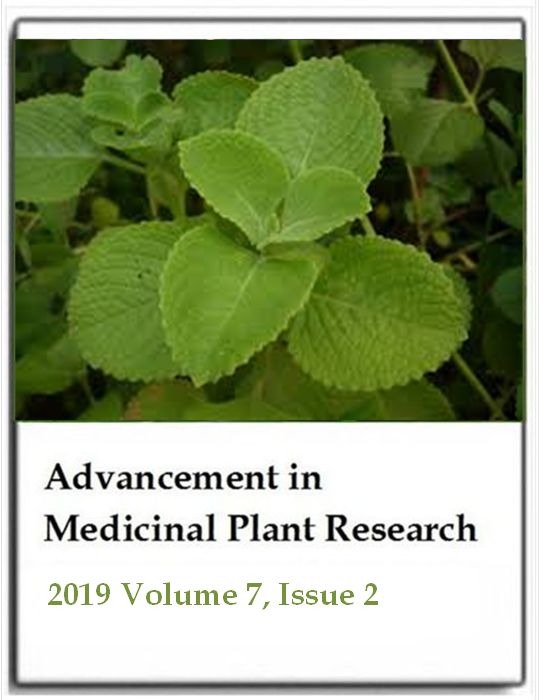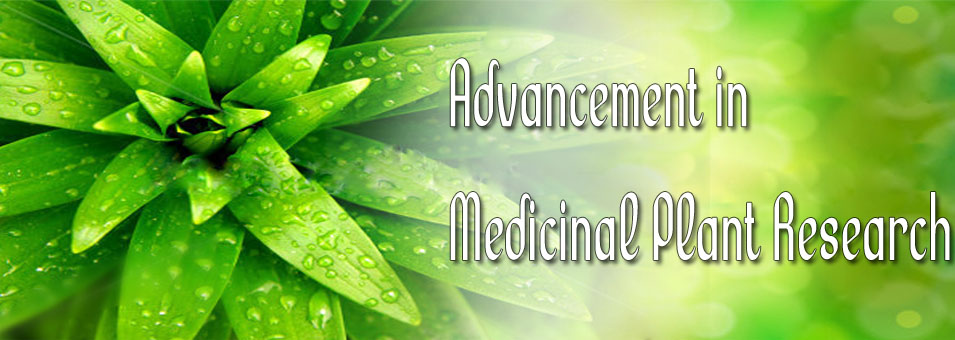Comparison of four different solid-phase microextraction fibers for analysis of Plectranthus amboinicus (Lour.) Spreng. leaf volatiles
Guilherme Perez Pinheiro, Maria Isabel Galbiatti, Mara Junqueira Carneiro and Alexandra Christine Helena Frankland SawayaAdvancement in Medicinal Plant Research
Published: April 24 2019
Volume 7, Issue 2
Pages 38-43
DOI: https://doi.org/10.30918/AMPR.72.19.020
Abstract
Plectranthus amboinicus, also known as Indian borage or Mexican mint, is a species of Lamiaceae cultivated worldwide for ornamental, culinary and medicinal purposes, being used in folk medicine for the treatment of respiratory diseases and digestive problems. These properties are attributed to the abundance of phenolic monoterpenes present in its essential oil, which have been extensively described in the literature. The low yield of essential oil hinders further investigation, besides the extraction being a costly and time-consuming procedure. The application of headspace-solid-phase microextraction (HS-SPME) coupled to gas chromatography-mass spectrometry (GC-MS), an alternative technique in plant volatile analysis, is described in the present study for P. amboinicus growing in Brazil. Four SPME fibers with different coating composition were evaluated: polydimethylsiloxane (PDMS - 100 µm), carboxen/polydimethylsiloxane (CAR/PDMS - 75 µm), divinylbenzene/carboxen/polydimethylsiloxane (DVB/CAR/PDMS - 50/30 µm) and polydimethylsiloxane/divinylbenzene (PDMS/DVB - 65 µm). PDMS fiber extracted a total of 19 identified compounds (52.46% of monoterpenes and 42.09% of sesquiterpenes), CAR/PDMS fiber 22 identified compounds (55.05% of monoterpenes and 25.51% of sesquiterpenes), DVB/CAR/PDMS fiber 24 identified compounds (67.22% of monoterpenes and 23.88% of sesquiterpenes) and PDMS/DVB fiber 26 identified compounds (64.3% of monoterpenes and 30.93% of sesquiterpenes). The extractions with PDMS/DVB and DVB/CAR/PDMS fibers resulted in similar chemical profiles when compared to essential oil composition, in particular the triple-coated DVB/CAR/PDMS fiber which extracted more compounds with high retention time. Both of these fibers are the most suitable in an untargeted analysis of P. amboinicus volatiles, while PDMS and CAR/PDMS may be suitable for target compounds or classes of compounds. The data reported in this study demonstrates that HS-SPME coupled to GC-MS is a rapid and simple method of analysis and compose a valuable tool for the study of P. amboinicus volatiles.
Keywords: Medicinal plant, headspace volatiles, essential oil, gas chromatography-mass spectrometry, Plectranthus amboinicus.
Full Text PDFThis article is published under the terms of the Creative Commons Attribution License 4.0

